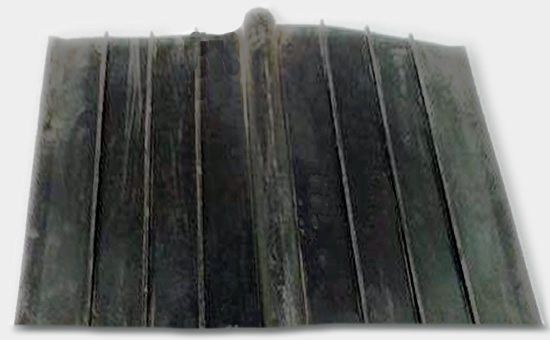Unvulcanized rubber or vulcanized rubber contained in the compound migrated to the surface and precipitation phenomenon is called frost spraying, EPDM rubber is a typical low temperature rubber, its vulcanized products are prone to frost phenomenon, frost spray not only affects the appearance of the product, reduce the adhesion of the surface of semi-finished products or finished products, but also affects the long-term performance of the product. Over-matching, under-sulfur, aging, uneven force and cooling can all lead to frost spraying. As one of the important additives in rubber formulation, the choice of type and dosage of accelerator will have a great impact on the spraying of EPDM recycled rubber products.
Accelerators have the effect of improving rubber vulcanization rate and crosslinking density, commonly used accelerators are M, DM, TMTD, BZ, dicumene peroxide (DCP), di-tert-butyl peroxide (DTBP), etc. If the amount of accelerator is too large, it will excessively increase the vulcanization rate and cross-linking degree of EPDM regenerated rubber, resulting in local vulcanization of the rubber during the molding process, resulting in stress concentration and increased internal residual stress, thereby inducing product frosting. After comparative experiments, it is found that the vulcanized rubber containing compound accelerator (EG3, EG33, EP33, NE-1) containing compound accelerators (EG3, EG33, NE-1) in the process of parking at room temperature has no frost spraying phenomenon, which is the same as that of the M/TRA/BZ system, while the degree of frosting of the vulcanized rubber of the M/TMTD and DM/TMTD/BZ systems is more serious, especially the vulcanized rubber of the M/TMTD system has begun to appear obvious ejection phenomenon during the cooling process after vulcanization. After accelerated spraying experiments, the curing film containing composite accelerators (EG3, EG33, EP33, NE-1) and M/TRA/BZ combined with the system had a mild frost spray degree, while the curing rubber spray degree of M/TMTDT and DM/TMTD/BZ systems was very serious. The vulcanized rubber containing each hair combination accelerator did not spray sticking for 30 days after being parked at room temperature, and the reason may be that the proportion of various accelerators contained in the compound accelerator is suitable to avoid excessive cooperation; The accelerators and their products in the vulcanization process have good compatibility with rubber, are insoluble in rubber or in rubber and have little difference in solubility at low temperatures. During long-term storage or use, the degree of frost spray of D12M6yy23 rubber products may increase accordingly.

Selecting the appropriate type and dosage of accelerator can effectively reduce the frosting tendency of HONGYUN EPDM recycled rubber products, and a certain amount of anti-spray agent can also be added to the EPDM reclaimed rubber formula to improve its processing performance and reduce the frosting tendency. Commonly used anti-spray creams are polycyclohexanedimethylene monoisocyanate. The addition of anti-spray agent can improve the stress condition inside EPDM reclaimed rubber, reduce the stress concentration point, eliminate the residual stress, and achieve the effect of reducing frost spray.
Selecting the appropriate type and dosage of accelerator, and adding a certain amount of anti-spray agent when necessary, is an important measure to effectively control the spraying of EPDM recycled rubber products. Only by formulating scientific and reasonable formula design and process control can we maximize the performance of EPDM reclaimed rubber and obtain high-quality rubber products.
Exclusive original article [commercial authorization] reprint, excerpt and excerpt in any form are prohibited without written authorization. Focus on Hongyun rubber: learn the process formula and raw material technology of producing rubber products from recycled rubber to help you reduce costs and increase profits